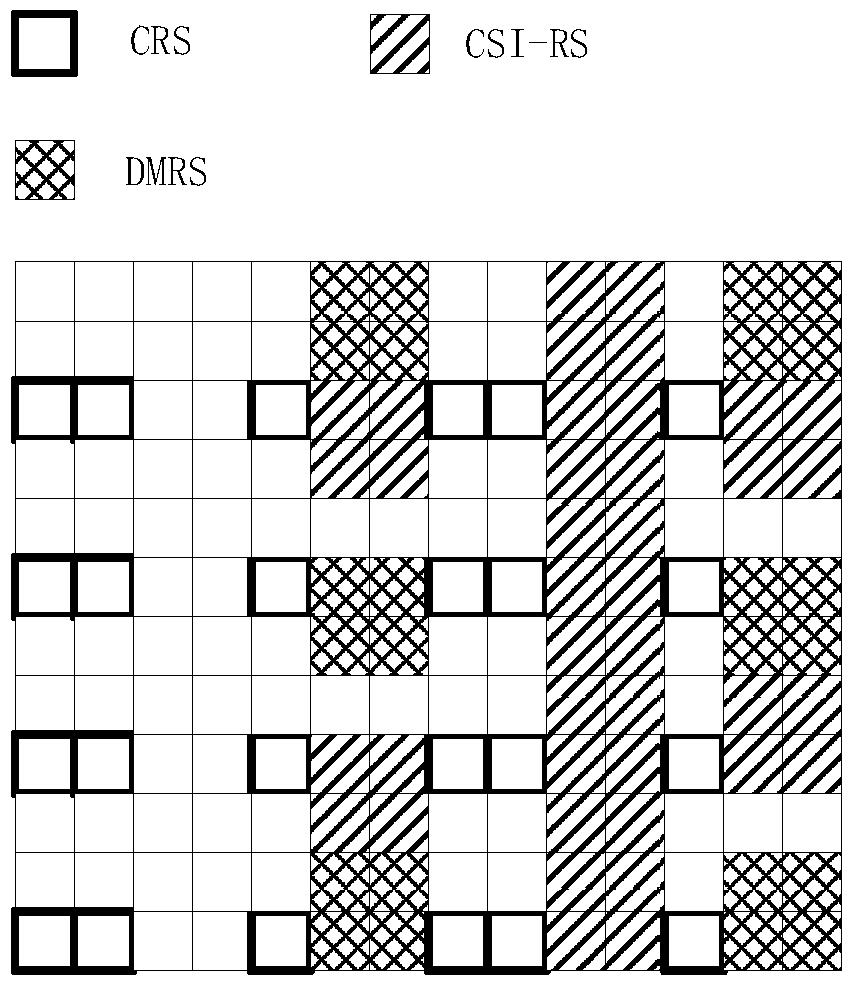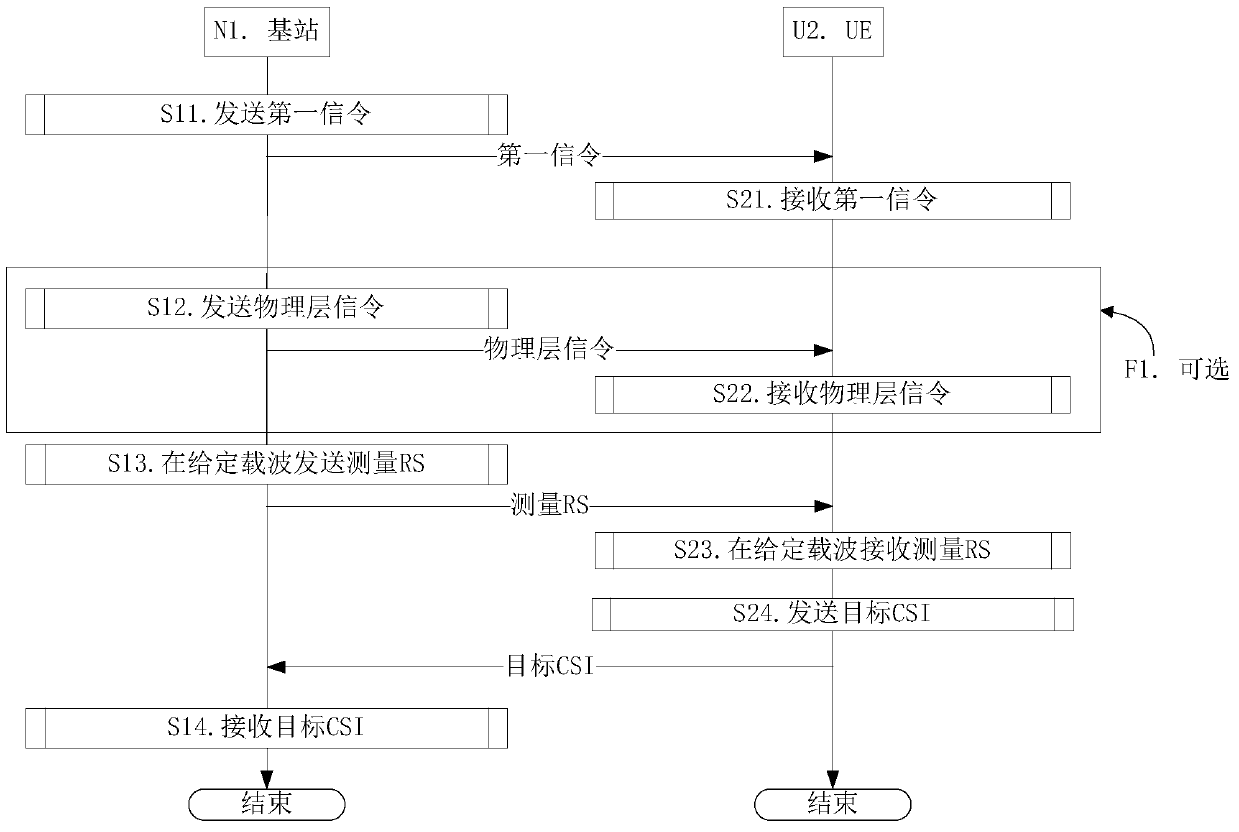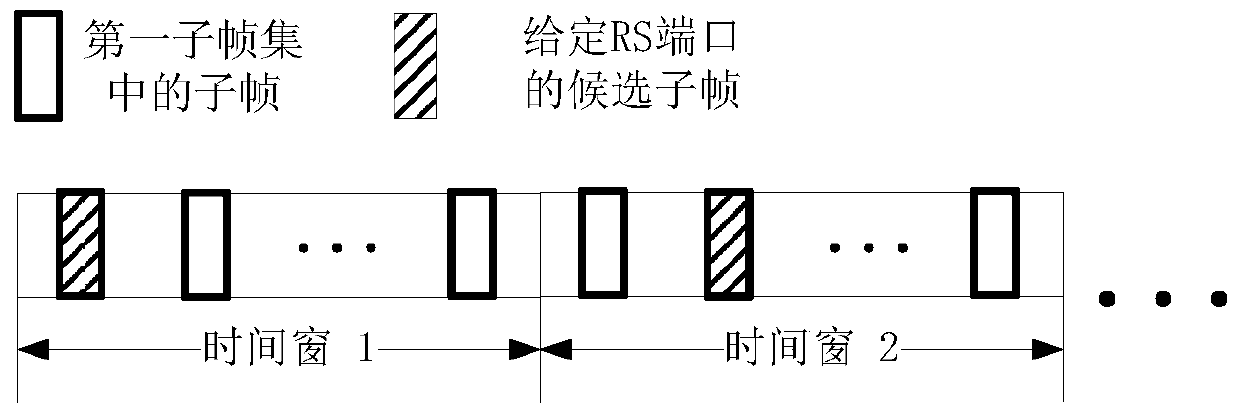A large-scale mimo transmission method and device
A first-time, sub-frame technology, applied in the direction of error prevention/detection through diversity reception, error prevention/detection using return channel, etc., can solve the problem of inability to meet cell orthogonality, occupying time-frequency resources, and aggravating downlink measurement. RS difficulty and other issues
- Summary
- Abstract
- Description
- Claims
- Application Information
AI Technical Summary
Problems solved by technology
Method used
Image
Examples
Embodiment 1
[0070] Embodiment 1 is a CSI feedback flow chart, as attached figure 2 shown. attached figure 2 In , the base station N1 is the serving base station of the UE U2. The steps identified in box F1 are optional steps.
[0071] For the base station N1, in step S11, send the first signaling to indicate the first subframe set; in step S13, on the given carrier, send the measurement RS on the downlink subframe in the first subframe set; in step S14 In the method, target CSI is received, and reference resources of the target CSI include the measurement RS. For UE U2, in step S21, the first signaling is received to determine the first subframe set; in step S23, on a given carrier, the measurement RS is received on the downlink subframe in the first subframe set; in step S24 In, the target CSI is sent, and the reference resource of the target CSI includes the measurement RS.
[0072] In Embodiment 1, the given carrier is composed of consecutive time windows in the time domain, and...
Embodiment 2
[0077] Embodiment 2 is a schematic diagram of the first subframe set, as shown in the attached image 3 shown. attached image 3 In , the squares marked with bold lines are subframes in the first subframe set, and the squares marked with oblique lines are candidate subframes for a given RS port.
[0078] For the base station, first send the first signaling to indicate the first subframe set; then on a given carrier, send the measurement RS on the downlink subframe in the first subframe set; then receive the target CSI, the reference resource of the target CSI Include the measurement RS. For UE U2, first receive the first signaling to determine the first subframe set; then on a given carrier, receive the measurement RS on the downlink subframe in the first subframe set; then send the target CSI, the reference of the target CSI A resource comprises the measurement RS.
[0079] In Embodiment 2, the given carrier is composed of consecutive time windows in the time domain, and ...
Embodiment 3
[0082] Embodiment 3 is a schematic diagram of the first subframe set in the TDD UL / DL frame structure scenario, as shown in the attached Figure 4 shown. attached Figure 4 In , the squares marked with bold lines are subframes in the first subframe set, and the squares marked with oblique lines are candidate subframes for a given RS port.
[0083] For the base station, first send the first signaling to indicate the first subframe set; then send the eIMTA signaling to indicate the downlink subframe of the given carrier within the configuration period of the eIMTA signaling; then on the given carrier, in Sending the measurement RS on the downlink subframes in the first subframe set; then receiving target CSI, where reference resources of the target CSI include the measurement RS. For UEU2, first receive the first signaling to determine the first subframe set; then receive the eIMTA signaling to determine the downlink subframe of the given carrier within the configuration perio...
PUM
 Login to View More
Login to View More Abstract
Description
Claims
Application Information
 Login to View More
Login to View More - R&D
- Intellectual Property
- Life Sciences
- Materials
- Tech Scout
- Unparalleled Data Quality
- Higher Quality Content
- 60% Fewer Hallucinations
Browse by: Latest US Patents, China's latest patents, Technical Efficacy Thesaurus, Application Domain, Technology Topic, Popular Technical Reports.
© 2025 PatSnap. All rights reserved.Legal|Privacy policy|Modern Slavery Act Transparency Statement|Sitemap|About US| Contact US: help@patsnap.com



